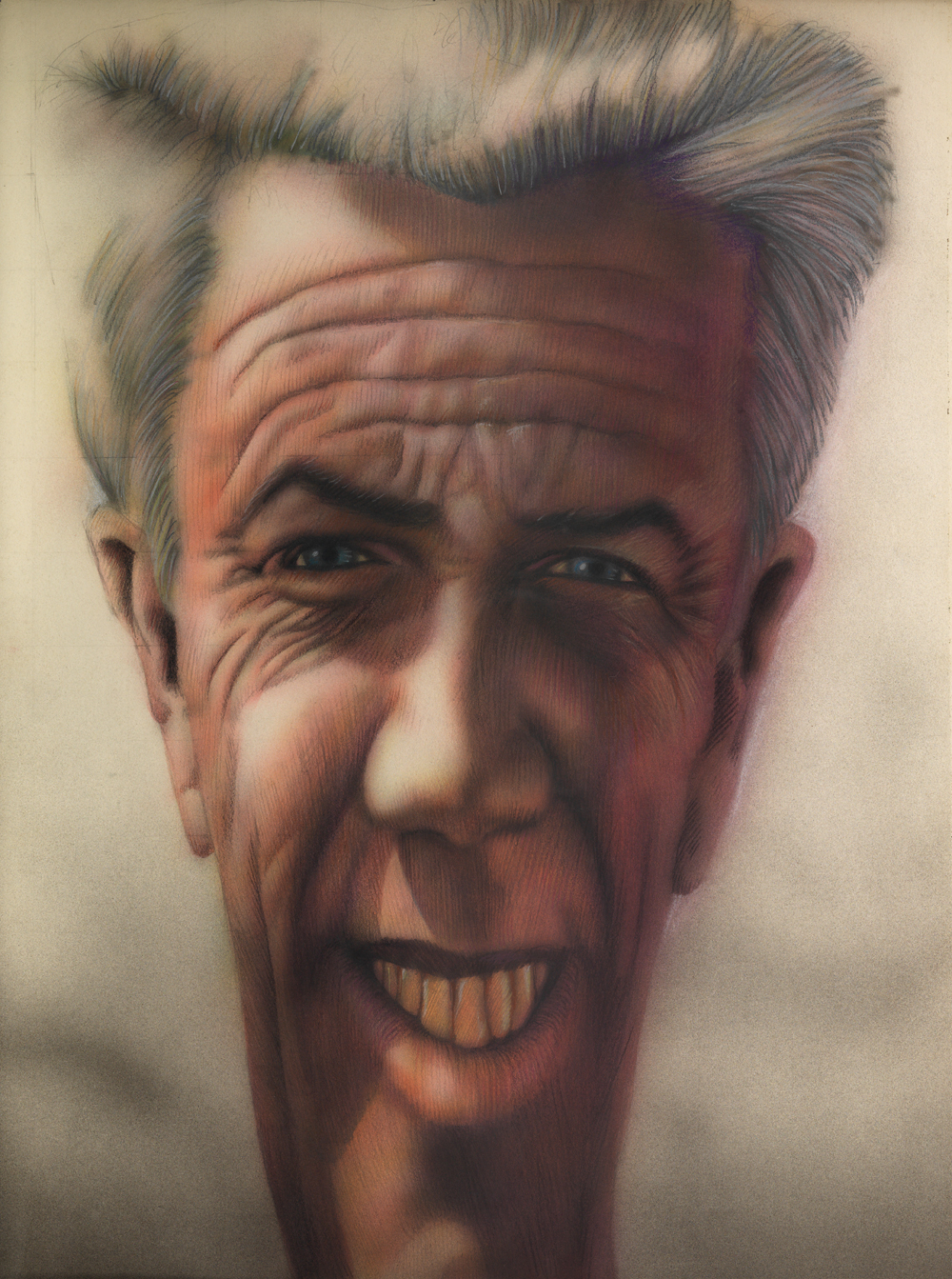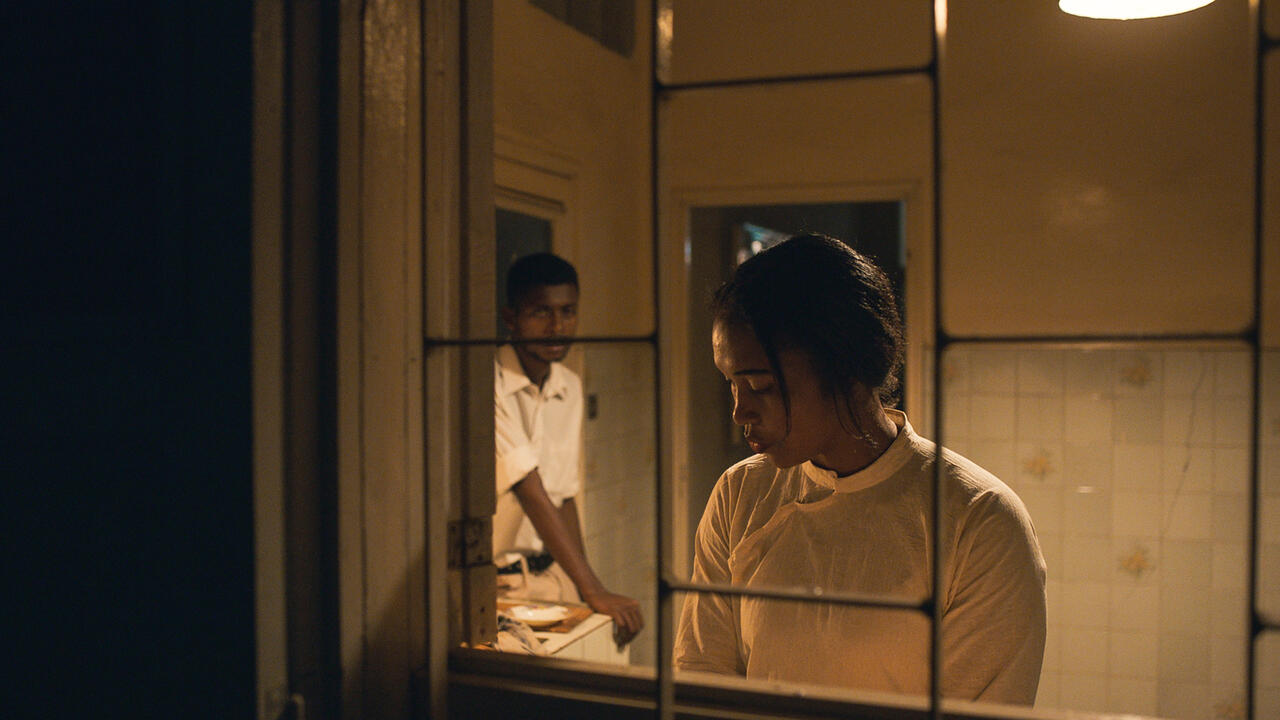Jim Shaw
New Museum, New York, USA
New Museum, New York, USA

Jim Shaw’s survey exhibition ‘The End Is Here’ is funny and aggressively off-kilter. Yet, underlying his amazingly diverse, inventively homegrown approach to art is a career-long preoccupation with apocalypse. Taking its title from a satirical religious pamphlet that was his MFA thesis project at CalArts, Los Angeles, in 1978, the exhibition has a scattershot sublimity, with sources and affinities ranging from William Blake to surrealism and pop art, DC comics, science fiction, teenage psychedelia, thrift store art, political cartoons and the work of his contemporaries including Jonathan Borofsky and Mike Kelley. Prophets of doom have foretold the end of the world for centuries, recalculating the date of the apocalypse each time it’s failed to happen. Apocalyptic subject matter, such as the Last Judgment, has interested Renaissance artists ranging from Hieronymous Bosch to Michelangelo, and, ever since the end of World War II, the annihilation of life as we know it – at the hands of nuclear weapons, killer robots, invaders from outer space, stray asteroids, or infectious disease – has been a theme in both fringe and mainstream culture. The word ‘apocalypse’ is generally defined as a world-destroying catastrophe, yet its original meaning is ‘revelation’, and Shaw’s thematic concerns can be apocalyptic in both senses. Ezra Pound once said that ‘artists are the antennae of the race’, and ‘The End Is Here’ shows Shaw’s knack for picking up disturbing signals that originate deep in the human psyche.
As an experience ‘The End Is Here’ is like visiting a hall of mirrors – compact but maze-like, it’s a carnival attraction that offers glimpses of the infinite. Shaw’s work consistently explores a wide variety of personal and cultural mythologies through self-analysis and historical research, and he has a long-standing interest in cultural forms both imaginative and didactic. Curators Massimiliano Gioni, Gary Carrion-Murayari and Margot Norton have divided the exhibition into chronological, thematic and project-specific zones. These include ‘My Mirage’ (1986–91), a semi-hallucinatory trip through the collective unconscious of the baby boom generation; Shaw’s collections of thrift store paintings which he has collected for more than 30 years, and idiosyncratic didactic materials titled ‘The Hidden World’ which he began collecting as a teenager; ‘Dream Drawings’ (1992–99) and ‘Dream Objects’ (1994–ongoing); and ‘Oism’, the artist’s invented religion that he coined in the late 1990s. The top floor of the museum features recent large-scale paintings on theatre backdrops and the installation Labyrinth: I Dreamed I Was Taller than Jonathan Borofsky (2009). Shaw’s early work includes Martian portraits, paintings on religious prints and multi-part UFO Photos, including one that refers to the Zapruder film, which caught on camera the assassination of John F. Kennedy in 1963. Part of the exhibition relates Shaw’s ‘distorted face’ drawings from the late 1970s and early ’80s to nearby works from the 1990s that are almost photorealistic, including a particularly striking one of his friend, Mike Kelley. Sometimes, Shaw pushes representational art as far as he can before the temptation to subvert it with one form of weirdness or another becomes too strong for him to resist. The eponymously titled pairing, Hudson Pencil and Hudson Bubble Gum (both 1993), for example, juxtaposes a traditional drawing of Feature Inc. gallery’s late founder with the same portrait done in pink, indigestible candy.

‘My Mirage’ represents a return of the repressed, bravely acknowledging the power of the underground kitsch of his youth. Comprising a series of nearly 170 objects that have been shown in various configurations, as well as a book, it’s the complex story of Billy, a boy who was born in the 1950s and whose life parallels Shaw’s as he navigates the period’s subcultural highs and lows, from the hippie counterculture to born-again Christianity. You don’t have to have been a teenager in the 1960s and ’70s to appreciate Shaw’s embrace of what was commonly labelled lurid trash, but it helps. Shaw’s facility to assimilate a wide range of styles isn’t as detached as earlier pop artists such as Roy Lichtenstein and Andy Warhol; when he’s quoting or referring to other artists, it’s rarely impersonal or mechanical. Including about half of the works in the series here, some of the most memorable pieces refer to DC comic artists such as Wayne Boring, Famous Monsters of Filmland magazine, James Bond paperbacks and psychedelic LPs – about as far from Clement Greenberg and Ad Reinhardt as you can get. Some of its artwork has a quasi-visionary quality, mixing takeoffs of superhero comic covers with religious iconography, as in The Temptation of Doubting Olsen (1990). One of the challenges of ‘My Mirage’ is the dense formation of comic books, magazines and sequential art: some comic book pages look great when they’re on display, but they are intended to be held, rather than seen on a gallery wall. With so much close looking involved it’s difficult to take in the whole of ‘My Mirage’ but repeat visits bring continued reward. Both ‘My Mirage’ and ‘Dream Drawings’ deal with the collection and organization of ephemeral images and narratives, their personal content becoming more objective and broadly social through cultural references. Shaw’s dream drawings are done in pencil and, like comic pages or storyboards, include a variety of scenes on each page. Unlike comics, however, his dream drawings don’t usually include text and are accompanied by wall labels, which provide narrative details. Though this work is highly autobiographical, it has a somewhat objective, detached quality. For 20th-century expressionists like Max Beckmann, dreamlike imagery was depicted with a rough, brushy handling of paint and distortions of colour and form, while Jonathan Borofsky used a minimal, faux-naïve style in his dream drawings and paintings in the early 1970s. Shaw’s dream-based works opt for a straightforwardly descriptive, matter-of-fact approach, and rely on a detailed realism and normality of style that has its own kind of subjective strangeness. Many of the dream drawings included in ‘The End Is Here’ are explicitly sexual, with subject matter that’s about as private and personal as possible. They preserve in careful, often hilarious detail images and story fragments that could easily have been forgotten a few moments after waking up. Shaw’s ‘Dream Objects’ step further into waking reality, turning unconscious, involuntary stories into sculptures.
Using the histories of religions including Mormonism and Scientology as a starting point, Shaw’s ‘Oism’ projects include a wide range of invented characters, art styles and cultural artefacts that satirize religious sects, seen here in Oist Movie Poster Painting (from the series ‘Woman with No Name’, 2014), a video called The Whole: A Study in Oist Integrated Movement (2009), and ‘Oist Movie Stills (Kill Your Darlings)’ (2003-06). Unlike William Blake, who created a personal cosmology that reflected a stubborn, idiosyncratic mysticism, Shaw isn’t a believer in Oism. It’s more of a meta-narrative, a series of artworks about the phenomenon of fringe religions. Two of Shaw’s personal collections of objects demonstrate his omnivorous appetite for forms of culture that are outside the mainstream. ‘Thrift Store Paintings’, originally exhibited at Metro Pictures, New York, in 1991, shows the raw power of the work of self-taught artists – similar to Jean Dubuffet’s championing of Art Brut and the outsider art celebrated by the Hairy Who. Shaw’s collection doesn’t romanticize primitivism, but treats these generally neglected artworks as a form of evidence: some paintings illustrate the cultural reach and crossover influence of styles such as surrealism and abstraction, while others have a wilder strangeness, like a semi-pornographic Grandma Moses on acid.

‘The Hidden World’ is a collection of didactic material that Shaw has amassed over the years – banners, books, magazines, tracts, sculptures and LPs – often from religious groups such as the Jehovah’s Witnesses and the Latter Day Saints, but also including right-wing comics and the Golden Book Encyclopedia, a 16-volume, colourfully illustrated children’s reference set published in the US from 1959–69. Like Tony Oursler’s exhibition of UFO and effigy photos at Columbia University in 2013, ‘The Hidden World’ shows the dreamlike aspects of contemporary society that are often hiding in plain sight. Shaw’s installation, Labyrinth: I Dreamed I Was Taller than Jonathan Borofsky (2009) is both a straightforward homage to his teacher from CalArts, and is one of the most overtly political pieces in the show. Adapting its title from one of Borofsky’s dream drawings (I Dreamed I Was Taller than Picasso 2,047,324) and including references to some of Borofsky’s well-known sculptures including Ballerina Clown (1989) and Molecule Man (1997), it’s a mash-up of art-historical and political references that includes takeoffs of Salvador Dali’s Soft Construction with Boiled Beans (Premonition of a Civil War) (1936), Picasso’s Guernica (1937), the work of political cartoonists Thomas Nast and Herblock, a caricature of Richard Nixon and much more.
Shaw’s largest pieces are murals made from theatre backdrops that he’s added obscurely pop-surrealist iconography to, including Judgement (2015). The backdrop shows a rural landscape with a hillbilly cabin, on top of which Shaw has painted Casper the Friendly Ghost and the spectres of the figures in Jean-François Millet’s The Angelus (1857) emerging from graves, with the female figure superimposed over a giant praying mantis. Meanwhile, a symbolic horn-blowing figure flies overhead and small, hooded figures referring to both torture victims at Abu Ghraib and the Ku Klux Klan lurk in the distance. The Jefferson Memorial (2013) is a mash-up of stretchy superheroes Plastic Man and Mr. Fantastic, a military drone and more obscure imagery superimposed over a backdrop featuring the memorial’s neoclassical architecture. Rather than offering straightforward political or anti-war messages, these artworks are declamatory, imaginative explorations of Shaw’s perspectives on the political unconscious. Despite Shaw’s career-long involvement with apocalyptic imagery and his preoccupation with the irrational aspects of individual psychology and society, his work also has a humanistic side – one that can even be seen as fundamentally democratic in its obsessively referencing multiple styles and fringe traditions. This revelatory exhibition celebrates the importance of imagination and hard work as artistic values while keeping a great deal from disappearing down the memory hole of art history. Shaw gives us a lot to enjoy and think about while we’re waiting for the end of the world.






















